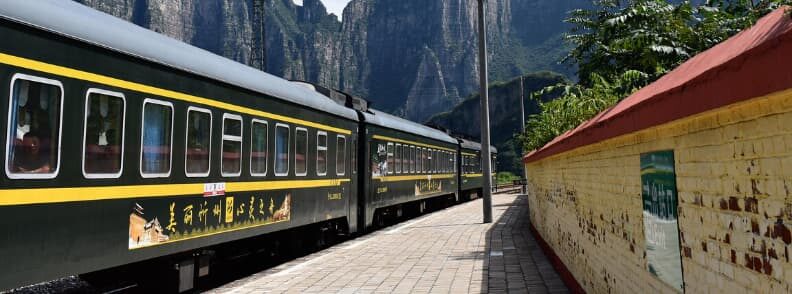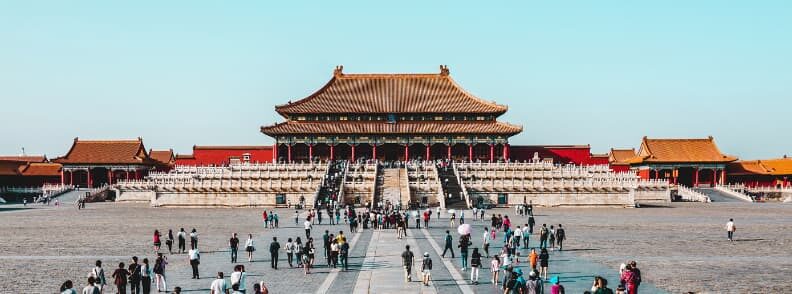Are you planning a trip to China soon? The world’s most populous country is also one of its most fascinating, full of history, culture, and plenty of places to see.
Over the years, the tourism industry in China has grown mainly because of local and international tourists that explore different regions of the country. Many international tourists travel to China not because they want to explore some exotic destination but because they want to experience a country with unique culture, history, and traditions that have made a global impact.
Today, China is one of the Four Ancient Civilizations in the world and has over 3000 years of history. So one can explore some monumental ancient heritage structures and temples. Also, the country has a diverse range of natural landscapes, a large variety of cuisine, and fascinating ethnic cultures and customs.
However, it is also very different from what you might be used to. This article will share several handy tips to help with your trip to China for first timers.

Get a stable VPN connection
Several websites, including Facebook, Google, and Instagram, are restricted in China. In addition, some smart device apps and email access may require a VPN connection to function correctly; therefore, getting one is highly recommended. Read this surfshark review, which is among the most stable VPN service provider.
A VPN can be an excellent way to bypass China’s Great Firewall to access those sites, but it is also important to find one that will stay connected. A stable VPN connection is essential for your safety because if the service disconnects at the wrong moment, you could end up in trouble! This is surely one of the first tips to keep in mind for first-time travelers to China.
Get your documentation done early
When you have plans to visit China you need to ensure that you have your papers handy. For this, you need to start with the Chinese visa process a month before. This would allow you to get on with the process which in some cases may take time. The process may differ from country to country and therefore you need to ensure that you get it done on time.

Plan your itinerary
China is a vast country geographically and therefore it would be hard for you to cover a lot of places in a short time. Hence, you need to have a plan on how you will cover destinations that you have on your mind. Be clear about the cities and landmarks you want to cover and reserve rail and flight tickets in advance so that you don’t have last-moment issues.
Drink bottled water
While you are traveling across China you must ensure that you always carry your water bottle. This would allow you to stay hydrated and ensure that you have access to water as and when you need it. Also, buy bottled water which is what the locals do. This would ensure that you can stay healthy and safe.
Best time to visit China

China is a country of extraordinary diversity. Around 200 different ethnic groups have unique traditional customs and colorful festivals. China’s natural beauty extends beyond its famous mountains to beautiful beaches, vibrant tropical islands, and more.
The Great Wall, Yangtze River, and the Gobi Desert are among the most popular travel destinations. So whether you enjoy a winter wonderland or the warm sun shining on your skin, China has the perfect destination for you.
For the most comfortable weather, consider coming in spring or fall. Spring is an excellent time as China is fresh and flowering, while autumn has drier weather than spring and moderate temperatures.

Opt for rail travel instead of flights
High-speed trains in China can transfer you from city to city and from airport to airport in the blink of an eye. Middle-class families with kids may not mind the long bus ride from Beijing to Xiamen, but rail gives them and business travelers an excellent alternative.
Since more airports have been built in recent years, the high-speed rail may even be faster than flying as stations are closer to city centers and may provide transfers via subway or bus.
Use private transport
Private transportation is the most convenient way to travel around China. Metros, taxis, and buses are inexpensive ways to see the sights and move around, but the language barrier and lack of familiarity with the area may cause you to spend more time than you want. Also, avoid unregistered taxi drivers who may charge exorbitant prices or engage in deceptive practices.
Learn basic Mandarin
Learning a few phrases of Chinese when you’re in China will enhance your experience. Picking up and using some simple words is an easy way to show that you want to be there, make friends and enjoy the culture. Arriving in a new country with an open mind and ready to meet people is the best way to get out there and explore!

Respect local culture
Interacting politely and taking an interest in the local culture is essential to a successful travel experience. Do not be afraid to ask questions, show genuine interest, and respect everyone you meet while you are on your trip.
Mind the toilets
In China, you can find accessible public toilets in parks and temples. They don’t provide toilet paper or soap, but they generally have water to flush the toilet.
Some travelers find it more convenient to use a squat toilet as it uses less water than Western toilets. It is always a good idea to carry hand sanitizer in public bathrooms throughout China.

Keep your mind open
Traveling to China can be very different from traveling to Europe and the United States. Therefore you might find new food items and experience unique cultures and traditions that might give you a culture shock. However, you need to keep aside your prejudices and focus on learning new things and ideas that would allow you to make the most of your trip.

Mirela Letailleur is a Romanian travel blogger living in the South of France. She writes on The Travel Bunny travel blog about affordable travel in Europe. Creator of unique free travel guides and local travel expert. Problem solver. Wannabe coffee guru.
More tips to visit China for first timers
2 days in Hong Kong itinerary: Asia’s hidden gem on a budget
Best places to visit in Shanghai: architecture of the past & future

